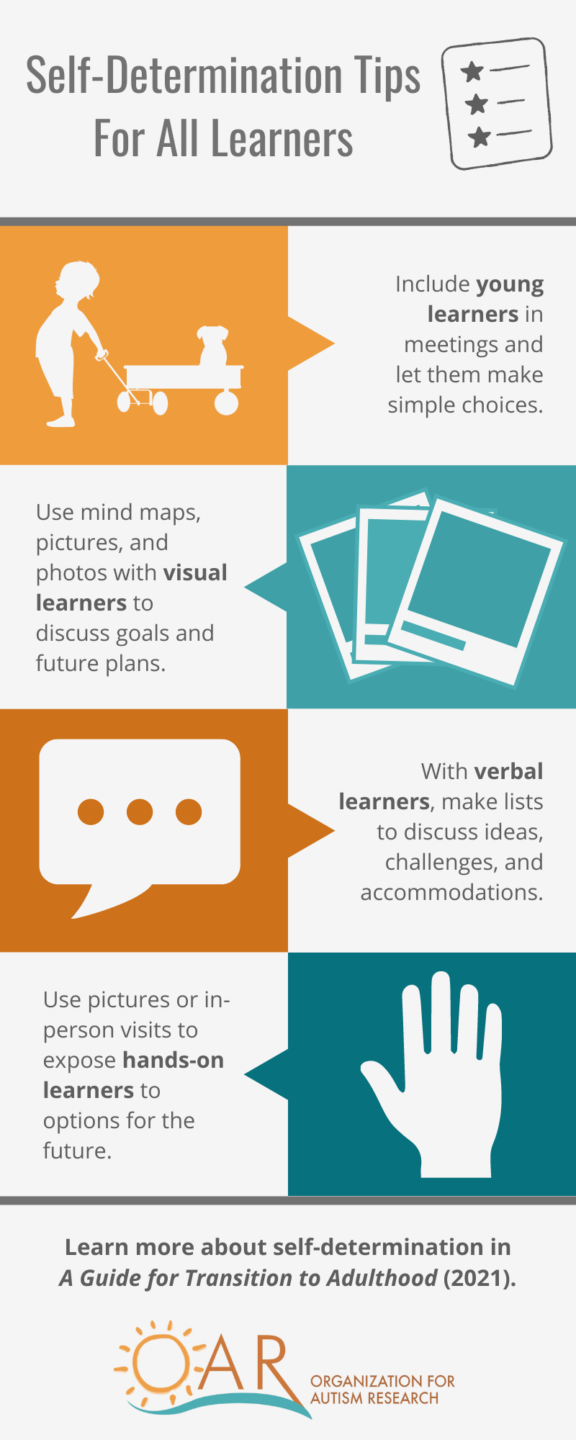In order to be an active participant in the transition planning process, your autistic teen needs to develop self-determination skills – the skills that enable individuals to speak up for what they want, what they’re interested in, and how they would like to accomplish it. Self-determination skills also allow individuals to have a strong understanding of their strengths and weaknesses, feel in control of their own lives, make important decisions, and figure out creative solutions to problems. Self-determination is for everyone, and no one should be denied the ability to take part in self-determination based on their age, communication style, disability, or any other reason.
OAR’s newest guidebook, A Guide for Transition to Adulthood (2nd edition, 2021), provides tips and worksheets to help autistic young adults develop self-determination skills. This blog post and infographic (adapted from the Transition Guide) share self-determination tips for different types of learners.
Self-determination tips for young learners:
- Include your child in IEP meetings as early as possible, even if only for a brief introduction. Providing your child with a favorite snack at the meeting can help them become interested in attending.
- Prompt your child by giving them simple choices, such as asking them which homework assignment they would prefer to work on first, to help them become familiar with the process of decision-making.
- Encourage your child to keep track of their time and tasks using a planner or calendar.
Self-determination tips for visual learners:
- Draw a map and pictorial representations of where your young adult is now, what their goals are, and what is needed to reach those goals. This may be done as a spider web of connected ideas or a timeline with connecting boxes.
- Have your child assist you in drawing pictures or cutting and pasting photos on the computer of them participating in their favorite activities.
Self-determination tips for verbal learners:
- Brainstorm together to identify and make a list of strengths.
- Create a list of activities or skills your child generally needs assistance with and the accommodations most likely to be effective and available.
Self-determination tips for hands-on learners:
- Consider using photographs or videos of different activities to assess their interest or observe individual reactions.
- Provide actual opportunities for your child to experience different community/vocational options to assess interest or observe individual reactions.
- Provide a sufficient level of exposure to these activities so that the assessments are based on a reasonable sample of experience.

This post was adapted from A Guide for Transition to Adulthood (2021). Click here to download or order the newly updated guide.